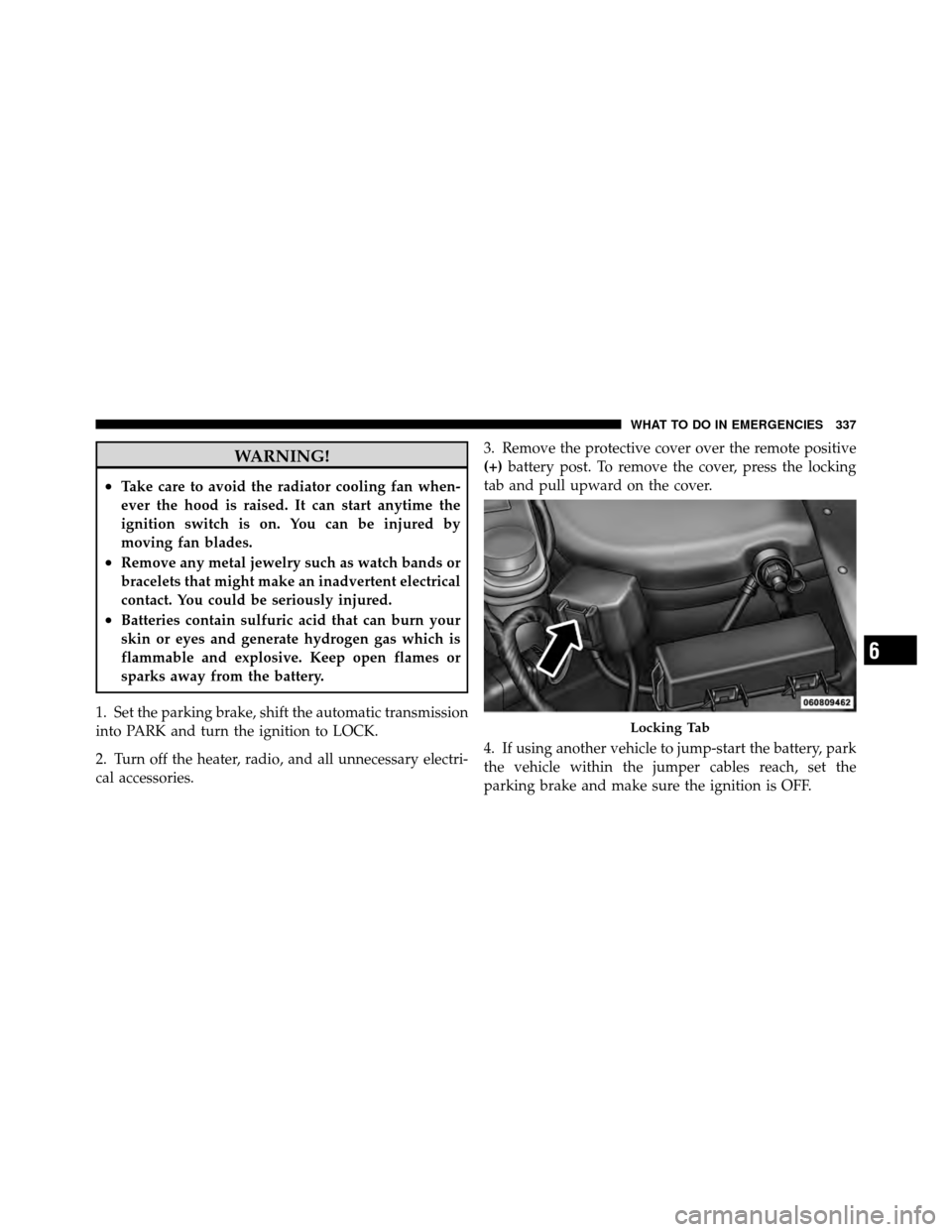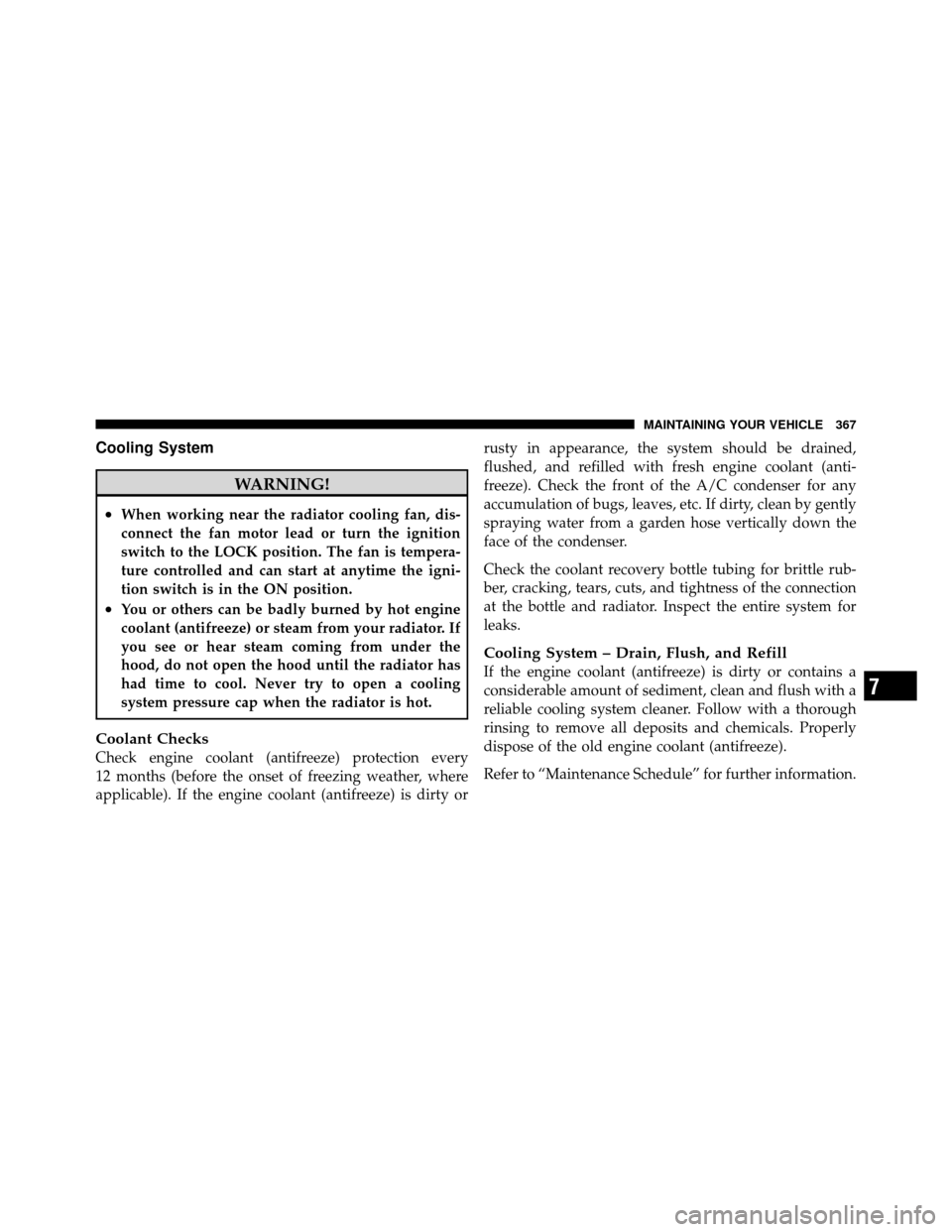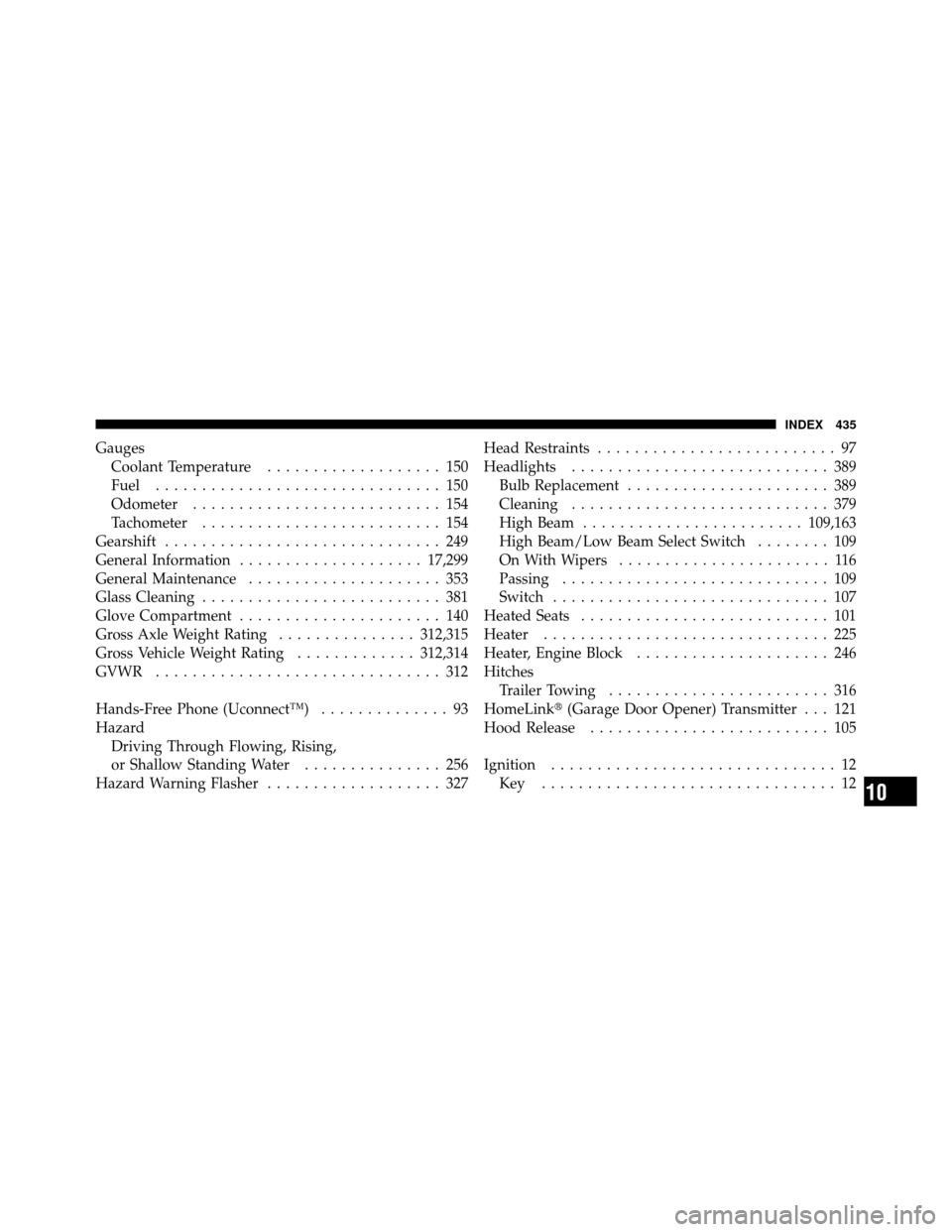Page 87 of 448

▫Fold-Flat Front Passenger Seat ........... 102
▫ Folding Rear Seat .................... 103
▫ Folding Rear Seat Center Armrest ........ 104
� To Open And Close The Hood ............ 105
� Lights ............................. 106
▫ Multifunction Lever .................. 106
▫ Headlights And Parking Lights .......... 107
▫ Automatic Headlights — If Equipped ...... 108
▫ Headlight Time Delay ................. 108
▫ Turn Signals ........................ 108
▫ Lane Change Assist ................... 109
▫ High/Low Beam Switch ............... 109
▫ Flash-To-Pass ....................... 109 ▫
Fog Lights — If Equipped .............. 110
▫ Daytime Running Lights — If Equipped .... 110
▫ Lights On Reminder .................. 110
▫ Instrument Panel Dimmer ...............111
▫ Map/Reading/Interior Lights ............111
� Windshield Wipers And Washers .......... 112
▫ Intermittent Wiper System .............. 114
▫ Windshield Washers .................. 115
▫ Mist Feature ........................ 116
▫ Headlights With Wipers Feature
(Available With Automatic
Headlights Only) .................... 116
� Tilt/Telescoping Steering Column .......... 117
86 UNDERSTANDING THE FEATURES OF YOUR VEHICLE
Page 106 of 448
TO OPEN AND CLOSE THE HOOD
To open the hood, two latches must be released.
1. Pull the hood release lever located under the left side
of the instrument panel.2. Lift the secondary latch located under the front edge
of the hood, near the center and raise the hood.
Hood Release Lever
Hood Safety Catch
3
UNDERSTANDING THE FEATURES OF YOUR VEHICLE 105
Page 107 of 448
Use the hood prop rod to secure the hood in the open
position. Place the upper end of the prop rod in the hole
on the left underside of the hood.
Before closing the hood, make sure to stow the prop rod
in its proper location.CAUTION!
To prevent possible damage, do not slam the hood to
close it. Use a firm downward push at the center of
the hood to ensure that both latches engage.
WARNING!
Be sure the hood is fully latched before driving your
vehicle. If the hood is not fully latched, it could open
when the vehicle is in motion and block your vision.
Failure to follow this warning could result in serious
injury or death.
LIGHTS
Multifunction Lever
The multifunction lever controls the operation of the
parking lights, headlights, headlight beam selection,
Hood Prop Rod Hole Location
106 UNDERSTANDING THE FEATURES OF YOUR VEHICLE
Page 329 of 448

NOTE:There are steps that you can take to slow down
an impending overheat condition:
•If your air conditioner (A/C) is on, turn it off. The A/C
system adds heat to the engine cooling system and
turning the A/C off can help remove this heat.
•You can also turn the temperature control to maximum
heat, the mode control to floor and the blower control
to high. This allows the heater core to act as a
supplement to the radiator and aids in removing heat
from the engine cooling system.
WARNING!
You or others can be badly burned by hot engine
coolant (antifreeze) or steam from your radiator. If
you see or hear steam coming from under the hood,
do not open the hood until the radiator has had time
to cool. Never try to open a cooling system pressure
cap when the radiator or coolant bottle is hot.
Engine Oil Overheating (2.4L Engine Only) —
If Equipped
During sustained high-speed driving or trailer tow up
long grades on a hot day, the engine oil temperature may
become too hot. If this happens, the “HOTOIL” message
flashes in the odometer and the vehicle speed will be
reduced to 53 mph (85 km/h) until the engine oil
temperature is reduced.
NOTE: The vehicle speed is reduced to a maximum of
53 mph (85 km/h). You may of course, reduce your
vehicle speed further if needed.
328 WHAT TO DO IN EMERGENCIES
Page 338 of 448

WARNING!
•Take care to avoid the radiator cooling fan when-
ever the hood is raised. It can start anytime the
ignition switch is on. You can be injured by
moving fan blades.
•Remove any metal jewelry such as watch bands or
bracelets that might make an inadvertent electrical
contact. You could be seriously injured.
•Batteries contain sulfuric acid that can burn your
skin or eyes and generate hydrogen gas which is
flammable and explosive. Keep open flames or
sparks away from the battery.
1. Set the parking brake, shift the automatic transmission
into PARK and turn the ignition to LOCK.
2. Turn off the heater, radio, and all unnecessary electri-
cal accessories. 3. Remove the protective cover over the remote positive
(+)
battery post. To remove the cover, press the locking
tab and pull upward on the cover.
4. If using another vehicle to jump-start the battery, park
the vehicle within the jumper cables reach, set the
parking brake and make sure the ignition is OFF.
Locking Tab
6
WHAT TO DO IN EMERGENCIES 337
Page 368 of 448

Cooling System
WARNING!
•When working near the radiator cooling fan, dis-
connect the fan motor lead or turn the ignition
switch to the LOCK position. The fan is tempera-
ture controlled and can start at anytime the igni-
tion switch is in the ON position.
•You or others can be badly burned by hot engine
coolant (antifreeze) or steam from your radiator. If
you see or hear steam coming from under the
hood, do not open the hood until the radiator has
had time to cool. Never try to open a cooling
system pressure cap when the radiator is hot.
Coolant Checks
Check engine coolant (antifreeze) protection every
12 months (before the onset of freezing weather, where
applicable). If the engine coolant (antifreeze) is dirty orrusty in appearance, the system should be drained,
flushed, and refilled with fresh engine coolant (anti-
freeze). Check the front of the A/C condenser for any
accumulation of bugs, leaves, etc. If dirty, clean by gently
spraying water from a garden hose vertically down the
face of the condenser.
Check the coolant recovery bottle tubing for brittle rub-
ber, cracking, tears, cuts, and tightness of the connection
at the bottle and radiator. Inspect the entire system for
leaks.
Cooling System – Drain, Flush, and Refill
If the engine coolant (antifreeze) is dirty or contains a
considerable amount of sediment, clean and flush with a
reliable cooling system cleaner. Follow with a thorough
rinsing to remove all deposits and chemicals. Properly
dispose of the old engine coolant (antifreeze).
Refer to “Maintenance Schedule” for further information.
7
MAINTAINING YOUR VEHICLE 367
Page 436 of 448

GaugesCoolant Temperature ................... 150
Fuel ............................... 150
Odometer ........................... 154
Tachometer .......................... 154
Gearshift .............................. 249
General Information .................... 17,299
General Maintenance ..................... 353
Glass Cleaning .......................... 381
Glove Compartment ...................... 140
Gross Axle Weight Rating ...............312,315
Gross Vehicle Weight Rating .............312,314
GVWR ............................... 312
Hands-Free Phone (Uconnect™) .............. 93
Hazard Driving Through Flowing, Rising,
or Shallow Standing Water ............... 256
Hazard Warning Flasher ................... 327 Head Restraints
.......................... 97
Headlights ............................ 389
Bulb Replacement ...................... 389
Cleaning ............................ 379
High Beam ........................ 109,163
High Beam/Low Beam Select Switch ........ 109
On With Wipers ....................... 116
Passing ............................. 109
Switch .............................. 107
Heated Seats ........................... 101
Heater ............................... 225
Heater, Engine Block ..................... 246
Hitches Trailer Towing ........................ 316
HomeLink� (Garage Door Opener) Transmitter . . . 121
Hood Release .......................... 105
Ignition ............................... 12
Key ................................ 12
10
INDEX 435